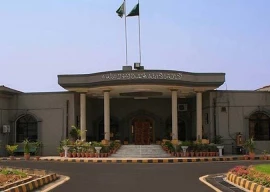
Under his children’s publishing house, Kitab, which he established in 2012, Farooqi launched a catalogue in December 2013 with eight books, five of which are in Urdu and three in English. The books comprise his book Tik-Tik, The Master of Time and those by renowned authors Sufi Tabassum, Ghulam Abbas and Mehdi Azar Yazdi.

“I am a writer and don’t really have an avenue to make my books available to kids in Pakistan. They have been published elsewhere, such as in India and overseas,” says Farooqi. “The problem is in Pakistan; we do not have publishing as an industry.”
Part of the initiative has been organising a tour during which Farooqi visited schools and other venues to encourage and engage people in the art of storytelling.
“We started to promote our books in Karachi through storytelling sessions in schools, which became so popular that we had to expand them to local bookshops. We have also held two workshops where we taught adults the art of telling children stories.”
He says the initiative was experimental at first and has grown due to the demand for such interactions. “There is a huge demand for children’s literature. We do not have a sense of continuity of what has been available to us over the years, such as the history of Urdu and South Asia. Recorded history dates back to the time of Aurangzeb; it was meant to educate kids,” says Farooqi.
Kitab is looking to expand by housing 40 different books, including those written by new writers and local adaptations, none of which will be Farooqi’s own works.
They will also be publishing Urdu books as well as promoting local authors whose names will be disclosed at a later time.
“There have been project-based initiatives in the past, which would begin, but wouldn’t continue. The idea with this is not only to meet kids and tell them a story, but to encourage children to read,” says Saira Ali, who is working with Farooqi on the project.
She says that the project has a two-pronged goal: to have schools incorporate literature into their curriculum and libraries, and develop a retail culture where kids will be able to buy books of their own liking.
“We interact with children and tell them stories in Urdu. The response has been amazing. Unfortunately, we have stigmatised Urdu language to a point that if you only converse in Urdu, it is perceived as ‘uncool’,” say Ali.
“But when they see that here is an author (Farooqi), who writes in English and has no problem when speaking in Urdu, it creates a positive impact,” Ali adds.
Published in The Express Tribune, April 14th, 2014.
Like Life & Style on Facebook, follow @ETLifeandStyle on Twitter for the latest in fashion, gossip and entertainment.
COMMENTS (1)
Comments are moderated and generally will be posted if they are on-topic and not abusive.
For more information, please see our Comments FAQ

1725612926-0/Tribune-Pic-(8)1725612926-0-165x106.webp)








1725254039-0/Untitled-design-(24)1725254039-0-270x192.webp)






Wonderful project, but the children who will really read these books cannot afford to buy them. That has been the deterrent, not the encroachment by English. Paisa libraries, and cheap books in the past made books accessible to everyone at a very low cost and so reading was popular among children as well as adults. Now, a few hundred rupees can fetch either roti daal or a book. Let's not just think about printing more books for rich kids who won't read them but also about ways to get books to poor children. I love Musharraf's books and the prospect of introducing literature, again, to children is a marvelous idea.